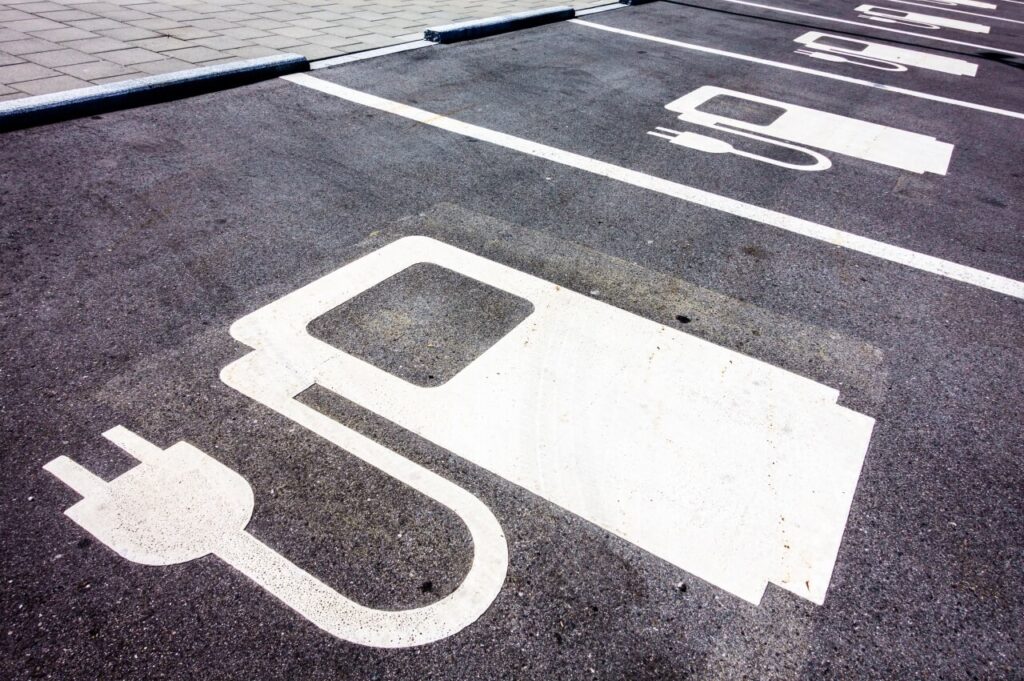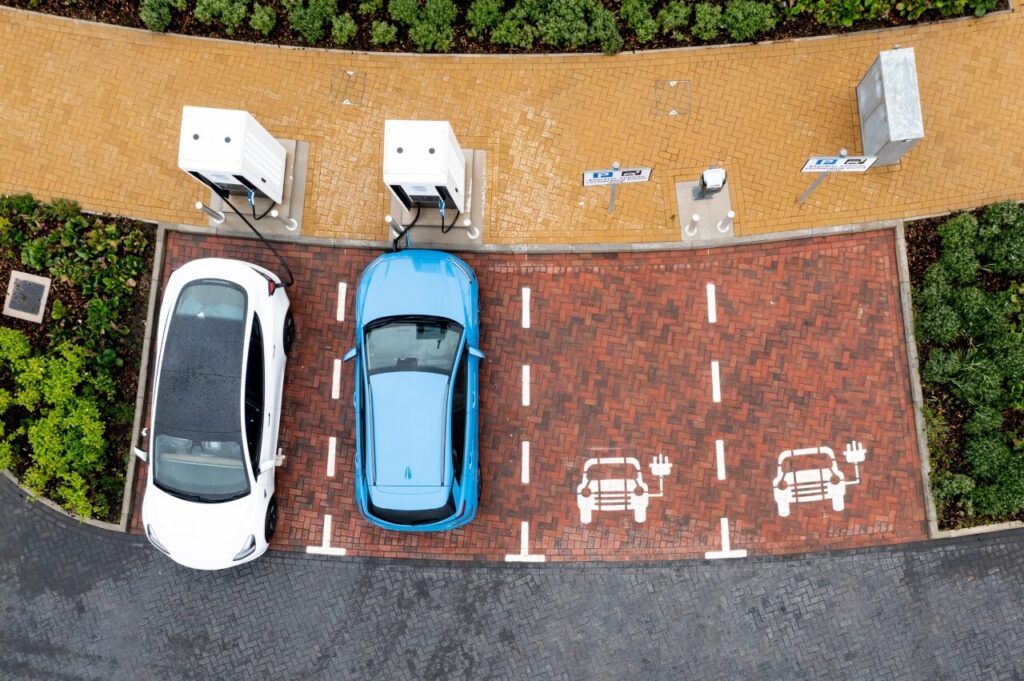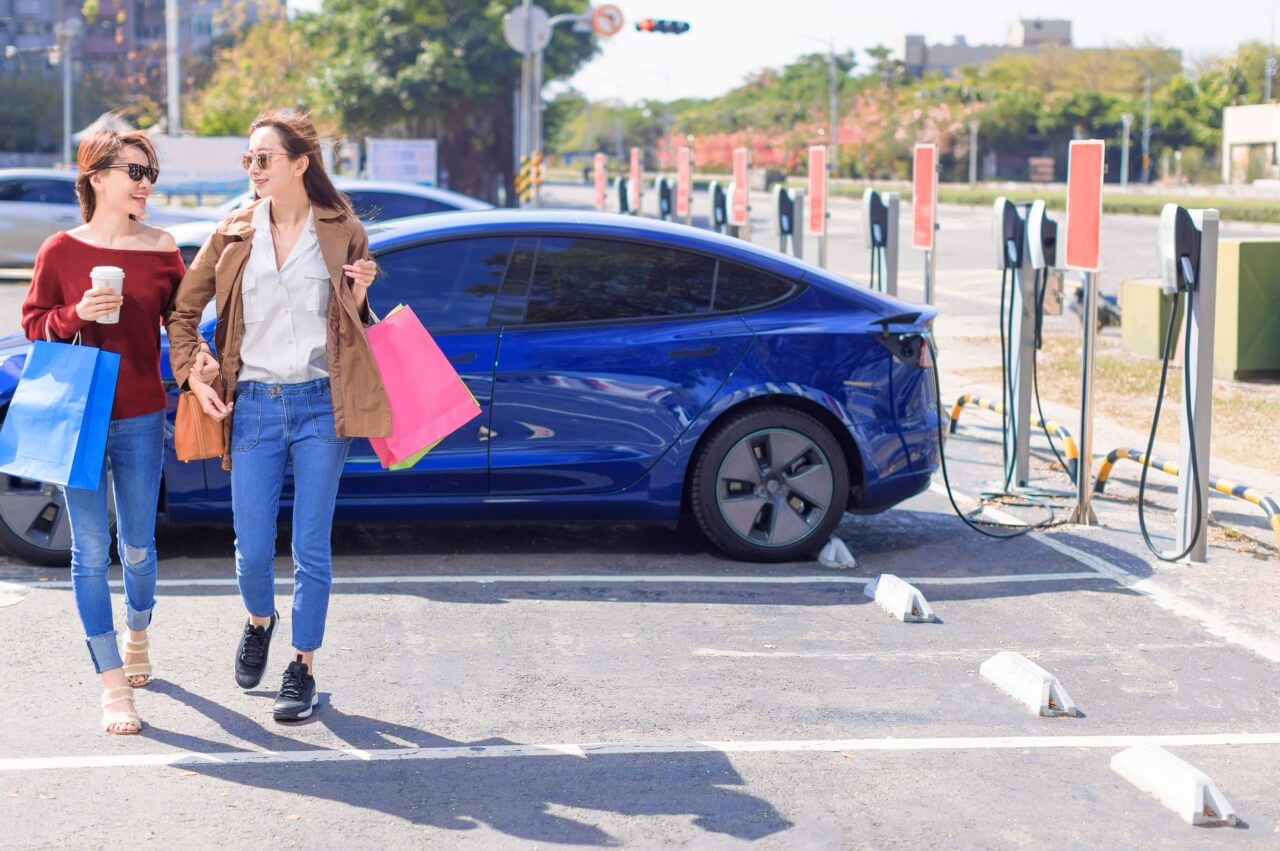EV Mythbusting: There’s No Place to Charge
Can You Find a Place to Charge Out on the Road?
Electric vehicles are becoming more popular due to increasing investment from big automakers. Numerous companies have announced plans to ramp up production this decade as they drift away from internal combustion engine vehicles.
The rise in EVs has led to doubts and myths for some, especially surrounding the availability of public chargers. Here’s the truth about America’s EV charging stations.

Finding EV Chargers
Currently, the U.S. has 130,000 public chargers spread across 53,000 charging stations. The country has more than three million EV owners, so demand is high. Some areas require more chargers to meet needs and renewable energy supply is being ramped up to make sure the electricity is as clean as possible. Fortunately, help is on the way soon. Apps like Plugshare can point you to your nearest charger.
In February, President Biden announced his administration’s plans to expand access to charging stations. The strategy calls for 500,000 new EV chargers by 2030. Cities and states can apply for grants to build these new charging stations if they meet federal guidelines.
For now, finding a charger is easier if you live in a large city, but access will become more widespread throughout the decade.
Charging Efficiently
Some people refrain from buying an EV because of the charging time. Currently, there are three levels of chargers. Level 1—a standard 120-volt wall plug–is the slowest. You’ll need around 40 hours to charge a typical EV from empty to full with a Llevel 1 charger.
Most charging stations and many homes have Level 2 chargers. These systems offer double the voltage, around 240 volts, for residential chargers and 208 volts for commercial stations. Charging from empty to full requires between four and 10 hours.
Direct current fast charging (DCFC) stations are the quickest available and can charge an EV in under an hour. Tesla drivers have their own network of superchargers, but growing DCFC stations from Electrify America, EVgo and others, are starting to sprout up around the country. Tesla has opened up some for other makes and models and will later authorize more.

Dealing with Charger Challenges
An at-home charger can be convenient for EV owners. They are ideal for starting long road trips and ensuring you’re ready to drive to work in the mornings. However, chargers can present challenges.
Energy Capabilities
Level 1 chargers are accessible for most homes in the U.S. All you need to do is plug the charger (which comes with most EVs) into the same outlets as you do for other appliances. However, Level 2 chargers are a different story.
The higher voltage requires a more powerful panel. Many homes in the U.S. have 100-amp panels, adhering to standards from the National Electric Code (NEC). Your home will likely need a 200-amp system, which is another task for the electrician. Many homeowners may need to add space to their panels to fit their Level 2 chargers if they have filled other circuit breakers.
Electric Grid Demand
Homeowners upgrading their amp panels can use 240-volt chargers, but they should brace for a rise in utility bills. Many EVs require charging two or three times weekly, depending on daily commutes. Energy bills may increase, but EV owners save money by not purchasing gasoline (and home charging rates are almost always less than public charging rates). Some newer homes may even come with a charger pre-installed. However, you should consider how their increased power usage affects climate change.
EV ownership is quickly rising, meaning a higher strain on electric grids. The International Energy Agency (IEA) says global electricity demand will grow to over 40,000 terawatt hours (TWh) by 2040. Compare that total to just under 30,000 TWh in 2020.
Many cities and states struggle to meet power demands due to heat waves, snowstorms and growing populations. Future energy shortages could leave some EV owners out of luck when they need to charge. One solution is to install a solar panel. These systems produce energy for the homeowner instead of relying on public utilities.
Cost
Installing a Level 2 charger at home can significantly improve convenience, but it comes at a cost. Experts say installing a home charger can start at around $500 but easily climb to $3,000.
The installation cost could be out of the budget for many, but there are ways to alleviate the expense. One strategy is to use tax credits. The Inflation Reduction Act (IRA) provides a 30% rebate of up to $1,000 for installation costs related to EV chargers.
Taking Advantage of EV Chargers
Consumers can be optimists and doubters when it comes to EVs. They’re an upgrade for environmental health, but some worry about the charging infrastructure.
The U.S. has more than 100,000 chargers and plans to expand the infrastructure significantly in the next decade, which is good news for every EV owner, though home and workplace charging remains.a good alternative.

order generic lasuna – himcolin pills purchase himcolin pill
how to get besifloxacin without a prescription – how to buy carbocisteine buy sildamax tablets
neurontin 600mg canada – buy neurontin 100mg generic buy sulfasalazine medication
probenecid 500 mg price – buy etodolac without a prescription order carbamazepine 200mg online cheap
celecoxib pill – buy celecoxib pills buy indomethacin 50mg capsule
mebeverine 135 mg without prescription – arcoxia pill cilostazol 100 mg ca
buy diclofenac 100mg sale – voltaren 50mg cheap aspirin 75 mg us
rumalaya pills – order endep 10mg generic order elavil 10mg generic
cost pyridostigmine 60mg – purchase pyridostigmine online buy azathioprine 50mg
diclofenac price – buy generic isosorbide for sale purchase nimodipine sale
cyproheptadine generic – periactin for sale online tizanidine sale
buy artane no prescription – buy artane tablets voltaren gel order online
cefdinir 300 mg cost – clindamycin over the counter buy clindamycin generic
where can i buy isotretinoin – deltasone 10mg tablet buy deltasone 20mg online
buy cheap prednisone – order generic permethrin buy cheap generic permethrin
purchase permethrin – acticin over the counter tretinoin gel canada
buy betnovate cream – where can i buy betnovate cost monobenzone
buy metronidazole 200mg pill – metronidazole order online cenforce for sale online
oral augmentin 1000mg – cheap levothroid online synthroid for sale
order cleocin 300mg generic – buy indomethacin 75mg online order indocin 75mg generic
cozaar 25mg drug – purchase keflex pill keflex 250mg for sale
order crotamiton online cheap – buy generic eurax for sale aczone order online
buy modafinil 100mg – brand modafinil 200mg melatonin 3mg brand
zyban 150mg ca – orlistat 120mg oral shuddha guggulu tablets
xeloda over the counter – buy generic naproxen 500mg where can i buy danocrine
buy prometrium 200mg generic – clomid online clomiphene drug
order alendronate 35mg sale – buy tamoxifen online provera sale
provigil order – buy epivir epivir pills
purchase promethazine without prescription – ciplox cost lincocin oral
order deltasone online cheap – order prednisone 5mg pill order capoten 25 mg generic
generic deltasone 40mg – starlix 120 mg over the counter purchase capoten online cheap
buy generic isotretinoin for sale – order zyvox generic purchase linezolid pills
amoxil pills – buy combivent 100 mcg for sale order ipratropium 100 mcg generic
order azithromycin 500mg online cheap – tinidazole cheap buy bystolic 5mg online cheap
prednisolone without prescription – generic azithromycin 500mg progesterone 100mg oral
buy clavulanate – buy cymbalta pills buy generic cymbalta